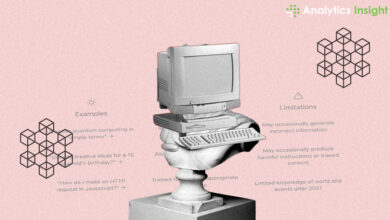Programming for Data Science: Essential Libraries and Tools

Data science has become an indispensable part of various industries, from finance and healthcare to marketing and technology. As data scientists and analysts navigate through vast amounts of data to extract meaningful insights, the choice of programming languages and libraries plays a crucial role in the efficiency and effectiveness of their work. This article delves into the essential libraries and tools for programming in data science, focusing primarily on Python and R, the two most popular languages in this field.
What is Data Science Programming?
Data science encompasses a broad range of tasks, including data collection, cleaning, analysis, visualization, and machine learning. To handle these tasks, data scientists rely on programming languages that offer flexibility, ease of use, and a rich ecosystem of libraries and tools. Python and R are the most widely used languages due to their extensive support for data manipulation, statistical analysis, and machine learning.
Python for Data Science
Python is renowned for its simplicity and readability, making it a favorite among data scientists. Its versatility and comprehensive standard library, combined with a vast array of third-party packages, make it an ideal choice for data science.
Essential Python Libraries
NumPy
NumPy is the cornerstone of numerical computing in Python, offering support for large, multi-dimensional arrays and matrices. NumPy is the backbone of most data science libraries in Python.
Key Features:
Efficient array computations
Broadcasting functions
Linear algebra operations
Random number generation
Pandas
Pandas, built on NumPy, is the go-to library for data wrangling. It introduces data structures like DataFrames, which are similar to tables in a relational database and make data manipulation tasks straightforward.
Key Features:
Data cleaning and preparation
Data alignment and integration
Handling missing data
Grouping, merging, and reshaping data
Matplotlib and Seaborn
Matplotlib in Python and ggplot2 in R are the leading libraries for creating static, animated, and interactive visualizations. They transform complex data sets into comprehensible and insightful visuals, enabling data scientists to tell compelling stories with data. Seaborn is built on top of Matplotlib and provides a high-level interface for drawing attractive and informative statistical graphics.
Key Features:
Line plots, scatter plots, bar charts, histograms
Customizable plots
Statistical plots like box plots, violin plots (Seaborn)
Scikit-Learn
Scikit-Learn is a robust library for machine learning in Python. They offer a range of algorithms for classification, regression, clustering, and dimensionality reduction, along with tools for model selection, evaluation, and preprocessing.
Key Features:
Classification, regression, and clustering algorithms
Model selection and evaluation
Preprocessing utilities
TensorFlow and PyTorch
TensorFlow and PyTorch are the leading libraries for deep learning. TensorFlow, developed by Google, is widely used for both research and production. PyTorch, developed by Facebook, is favored for research due to its dynamic computation graph.
Key Features:
Neural network architectures
GPU acceleration
Auto-differentiation
Python Tools for Data Science
Jupyter Notebook
Jupyter provides a web-based interface for Python. offer tools for code writing, data visualization, and version control, streamlining the data science workflow.
Key Features:
Interactive data exploration
Integrated visualizations
Support for over 40 programming languages
Anaconda
Anaconda is a distribution of Python and R for scientific computing, which aims to simplify package management and deployment. It includes the most popular data science packages and the Conda package manager.
Key Features:
Package and environment management
Pre-installed libraries
Cross-platform support
R for Data Science
R is a programming language that has become synonymous with data analysis and statistical computing. It is highly extensible and has a large community of users who contribute packages to CRAN (Comprehensive R Archive Network).
Essential R Libraries
ggplot2
ggplot2 is a data visualization package for R, based on the grammar of graphics. It provides a coherent system for describing and building graphs.
Key Features:
Layered grammar of graphics
High-quality plots
Extensive customization options
dplyr
dplyr is a package for data manipulation that provides a set of functions to solve the most common data manipulation challenges.
Key Features:
Data transformation verbs: select, filter, mutate, arrange, summarize
Chaining operations with the pipe operator (%>%)
Handling of grouped data
tidyr
tidyr is designed to help you tidy your data. Tidy data is a way of structuring datasets to facilitate analysis.
Key Features:
Functions for tidying data: gather, spread, separate, unite
Easy reshaping of data
caret
caret (Classification and Regression Training) is a package for building and evaluating machine learning models. It provides a unified interface to hundreds of machine learning algorithms.
Key Features:
Preprocessing of data
Feature selection
Model training and tuning
R Tools for Data Science
RStudio
RStudio are interactive development environments that facilitate exploratory data analysis. RStudio is a powerful IDE for R.
Key Features:
Code completion and syntax highlighting
Integrated support for version control
Tools for package development
Shiny
Shiny is a package for building interactive web applications directly from R. It is used to create dashboards and interactive visualizations.
Key Features:
Reactive programming model
Integration with HTML, CSS, and JavaScript
Deployment on the web with Shiny Server
Data Science Workflow
Understanding the workflow of a data science project helps in selecting the right tools and libraries. The typical workflow includes:
Data Collection
Data can be collected from various sources such as databases, APIs, web scraping, or existing datasets. Tools like requests in Python and httr in R are used for API interactions, while libraries like BeautifulSoup and Rvest help with web scraping.
Data Cleaning
Data cleaning involves handling missing values, removing duplicates, and correcting inconsistencies. Pandas in Python and dplyr in R provide comprehensive functionalities for these tasks.
Exploratory Data Analysis (EDA)
EDA involves summarizing the main characteristics of the data, often with visual methods. Libraries like Matplotlib, Seaborn, and ggplot2 are used for creating plots and visualizations.
Feature Engineering
Feature engineering involves creating new features from raw data to improve model performance. Tools like Scikit-Learn in Python and caret in R provide functions for this purpose.
Model Building
Model building involves selecting and training machine learning models. Scikit-Learn in Python and caret in R offer a wide range of algorithms and utilities for model building and evaluation.
Model Evaluation
Model evaluation involves assessing the performance of the model using metrics like accuracy, precision, recall, and F1 score. Both Scikit-Learn and caret provide tools for cross-validation and performance metrics.
Deployment
Deployment involves making the model available for use in production. Tools like Flask and FastAPI in Python, and Shiny in R, help in creating web applications and APIs for model deployment.
Integration and Version Control
Git
Git is a version control system that tracks changes in source code during software development. It is essential for collaboration and maintaining a history of the project.
Key Features:
Tracking changes and versions
Branching and merging
Collaboration through repositories
Docker
Docker is a platform for developing, shipping, and running applications inside containers. It ensures consistency across different environments.
Key Features:
Containerization of applications
Simplified dependency management
Scalability and deployment
Programming for data science requires a solid understanding of various tools and libraries that cater to different stages of the data science workflow. Python and R, with their rich ecosystems, provide the necessary capabilities to handle data collection, cleaning, analysis, visualization, and machine learning.
By leveraging the power of essential libraries such as NumPy, Pandas, Matplotlib, Scikit-Learn, TensorFlow, ggplot2, dplyr, and caret, data scientists can efficiently perform their tasks and derive meaningful insights from data. Additionally, tools like Jupyter Notebook, Anaconda, RStudio, Shiny, Git, and Docker facilitate smooth project management, collaboration, and deployment, making the entire data science process more streamlined and effective.



